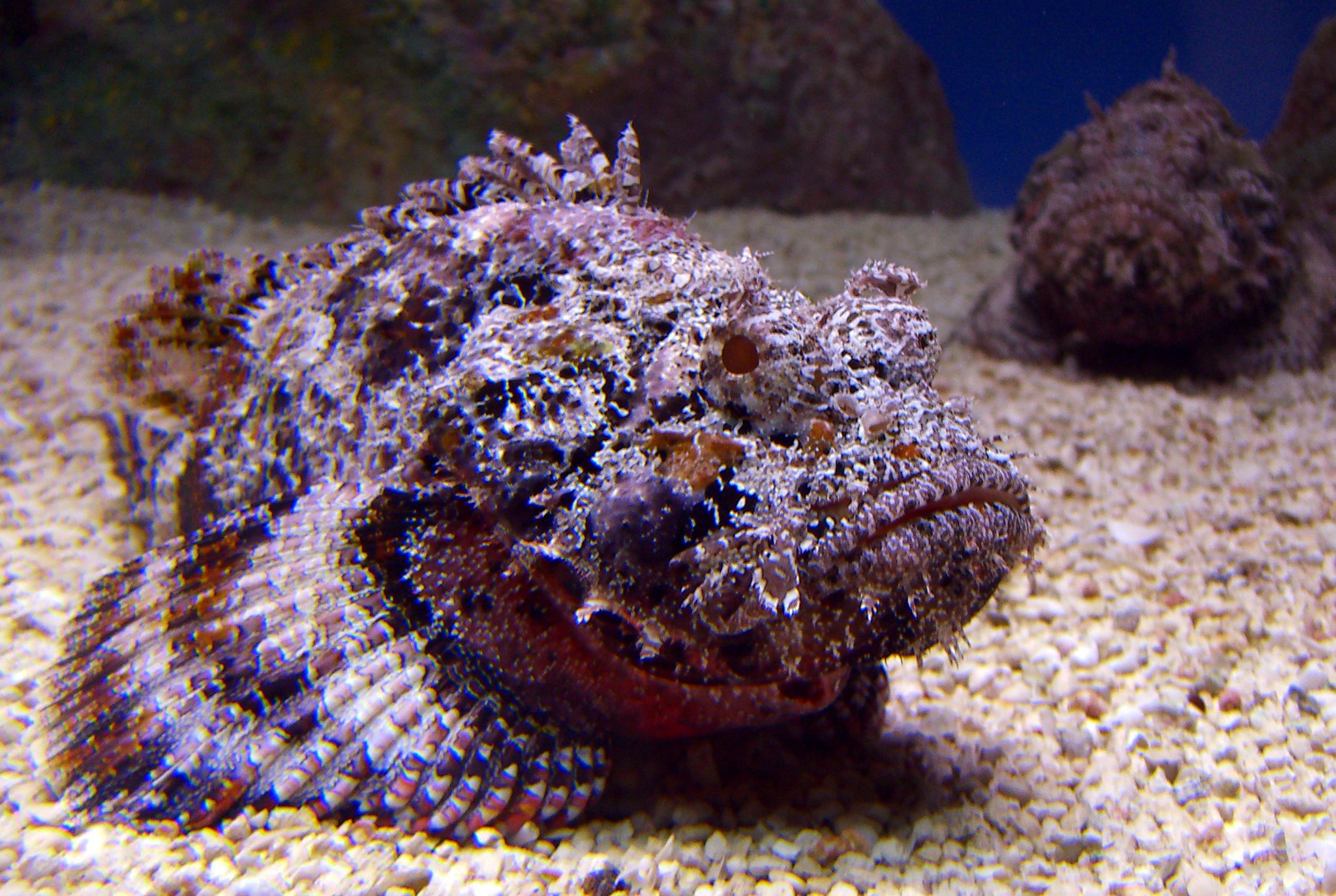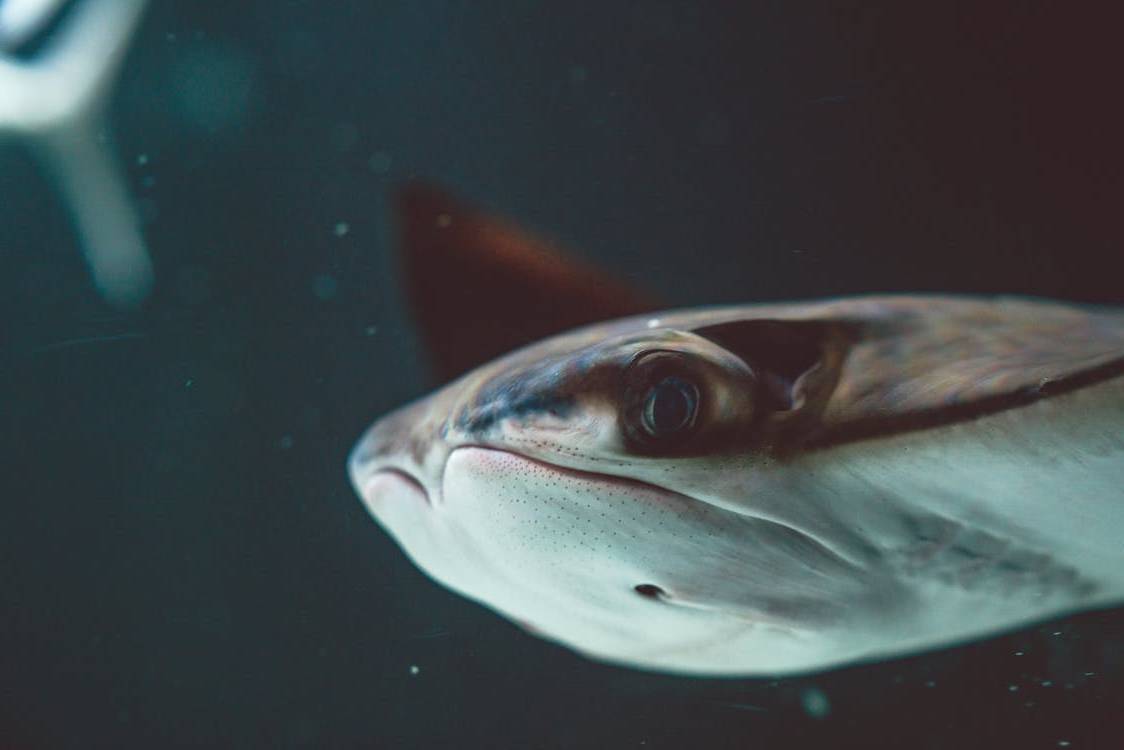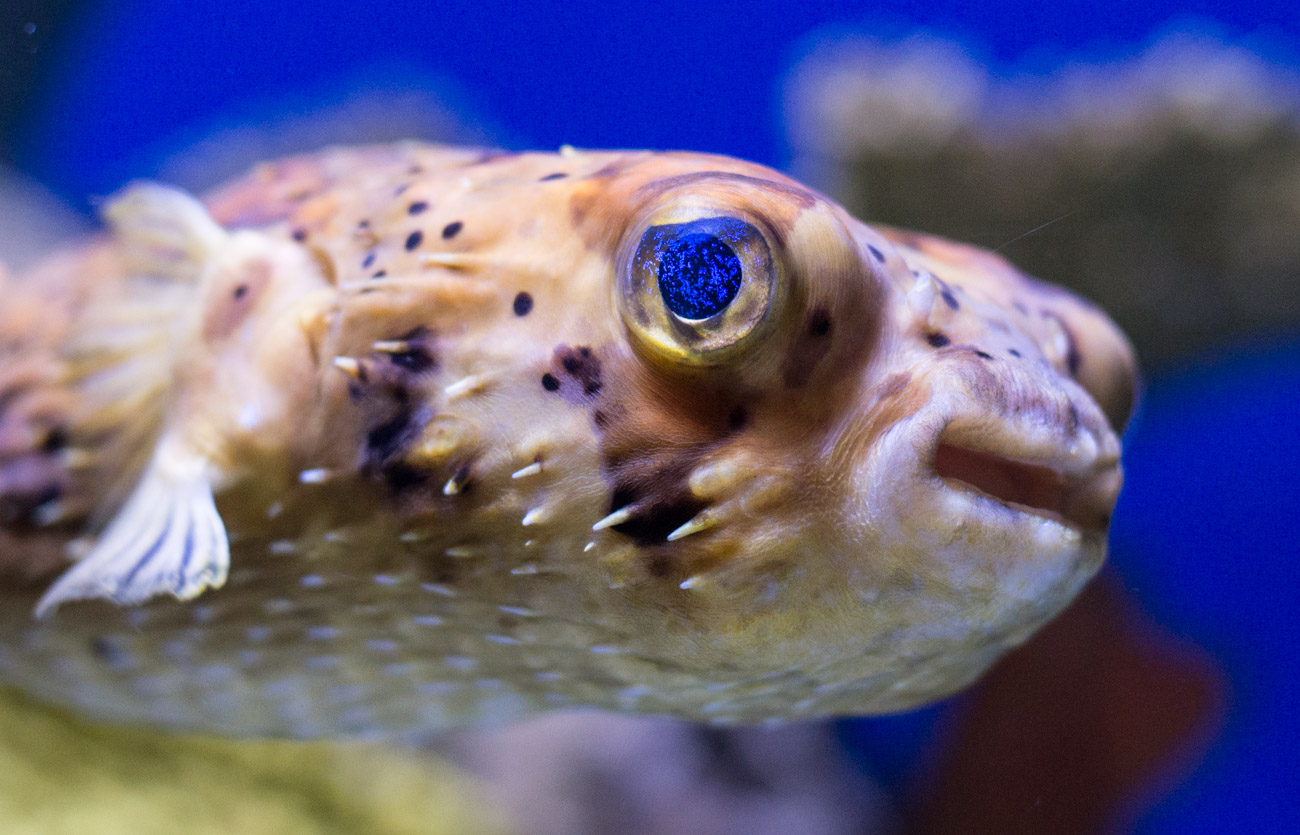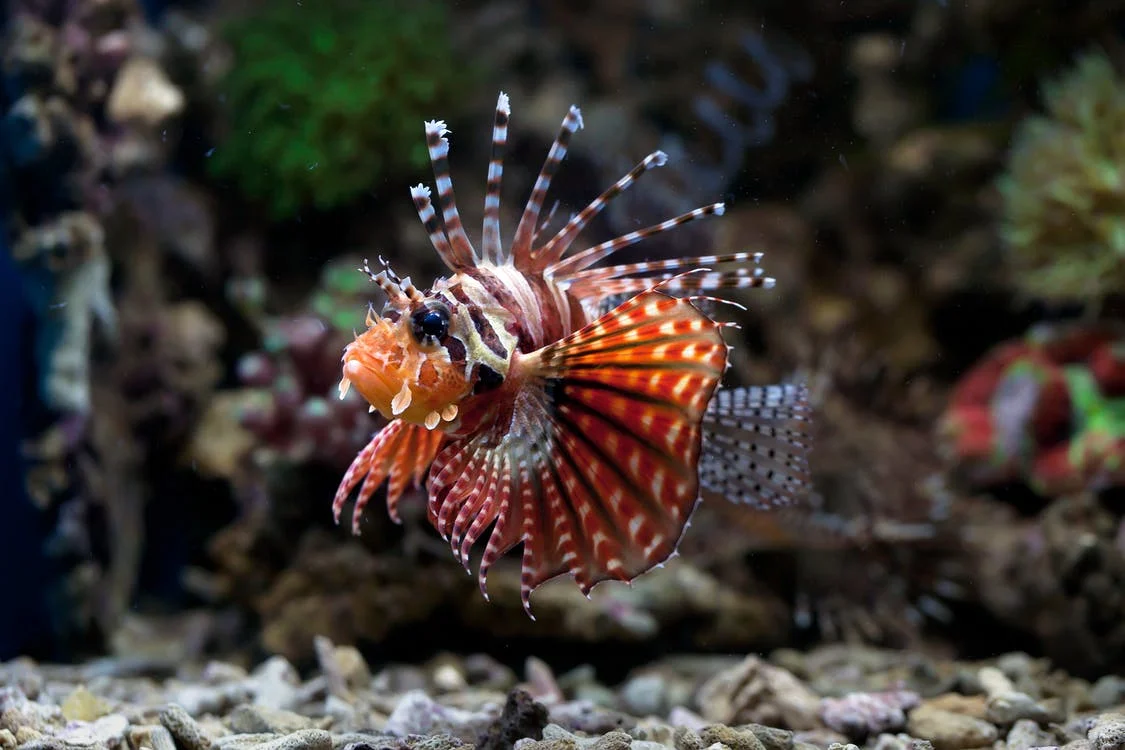Fish
There are thought to be up to 3,000 different venomous fish species with approximately 18 independent incidences of venom evolution (4 times in cartilaginous fishes, once in eels, once in catfishes and 12 times in spiny-rayed fishes). The most common method for envenomation is via dorsal spines (95% venomous fish species, 15 independent evolution events), venomous fangs (2% species, 2 independent evolution events) or and opercular or subopercular spines (1% species, 3 independent evolution events). Fish venoms possess cardiovascular, neuromuscular, oedematic and cytolytic activity. Lethal toxins have been isolated and purified, with some having toxicity values comparable to that of snake venoms. In contrast to reptile species, fish venoms are relatively unstudied and the thousands of unique venoms they produce therefore represent an untapped resource of potentially active pharmacological agents. Poisonous fish are fish that are poisonous to eat. They contain toxins which are not destroyed by the digestive systems of animals that eat the fish.

Stonefish
Common name: Stone Fish
Family: Scorpaenidae
Genus: Synanceia
Distribution: Coastal regions of the Indo-Pacific. Red sea, Persian Gulf, northern Indian Ocean, Australia
Venomous or poisonous?: Venomous
Interesting facts: The species has potent neurotoxins secreted from glands at the base of their needle-like dorsal fin spines which stick up when disturbed or threatened. Stonefish have the ability to extend a sharp, specialized spine known as a lachrymal sabre as an additional defence mechanism.
As food: Synanceia is edible to humans if properly prepared. The protein-based venom quickly breaks down when heated, and raw stonefish served as part of sashimi is rendered harmless simply by removing the dorsal fins which are the main source of venom. The fish are considered a delicacy in many parts of Asia.

Stingrays
Common name: Stingray
Suborder: Myliobatoidei
Family: There are about 220 species organized into ten families ( Hexatrygonidae, Plesiobatidae, Urolophidae, Urotrygonidae, Dasyatidae, Potamotrygonidae, Gymnuridae, Myliobatidae) and 29 genera.
Distribution: Stingrays are common in coastal tropical and subtropical marine waters throughout the world but are also found in warmer temperate oceans, the deep ocean and even freshwater rivers.
Venomous or poisonous?: Venomous
Interesting facts: Micronesia and other related regions made spear- and arrow-heads from stingray stingers. Whips were also crafted from large stingray tails in the Horn of Africa. The skin of the ray is used as an under layer for the cord or leather wrap on Japanese swords.
As food: Stingrays are edible and recipes can be found in many coastal areas worldwide. In Malaysia and Singapore, stingray is commonly grilled over charcoal, then served with spicy sambal sauce. In Goa, and other Indian states, it is sometimes used as part of spicy curries. Generally, the most prized parts of the stingray are the wings, the "cheek" and the liver. The rest is too rubbery to have any culinary uses.

Pufferfish
Common name: Pufferfish
Family: Tetraodontidae
Genus: The Tetraodontidae contain 193 species of puffers in 28 genera. Click here to discover more about pufferfish genera.
Distribution: They are most diverse in the tropics, relatively uncommon in the temperate zone, and completely absent from cold waters
Venomous or poisonous?: Poisonous
Interesting facts: Pufferfish can fill their extremely elastic stomach with water (or air if not in water), inflating them into a large ball shape. Combined with their pointed spines, this helps to deter predators, or cause choking. Predators who successfully swallow pufferfish may find their stomachs full of the neurotoxin tetrodotoxin (TTX). It is not always lethal to large predators such as sharks, but it can kill humans. Dolphins have been filmed passing pufferfish amongst themselves in an apparent attempt to get intoxicated.
As food: Despite the high concentration of toxins found in pufferfish organs, the meat of some species is considered a delicacy in Japan, Korea and China when prepared by specially trained chefs who know which part is safe to eat and in what quantity. Other pufferfish species with nontoxic flesh are considered a delicacy elsewhere.

Lionfish
Common name: Lionfish, firefish, turkeyfish, tastyfish, butterfly-cod
Family: Scorpaenidae
Genus: Pterois
Distribution: The lionfish is native to subtropical and tropical regions from southern Japan and southern Korea to the east coast of Australia, Indonesia, Micronesia, French Polynesia, and the South Pacific Ocean.
Venomous or poisonous?: Venomous
Interesting facts: The lionfish aggressively preys on small fish and invertebrates, which severely threatens the natural competition of aquatic life in the ocean. The red lionfish (P. volitans) and the common lionfish (P. miles), have established themselves as significant invasive species off the East Coast of the United States and in the Caribbean. They have been described as "one of the most aggressively invasive species on the planet"
As food: When properly filleted, the naturally venomous fish is safe to eat.
In 2010, NOAA began the "Lionfish as Food" campaign to encourage the consumption of the fish as human hunting of the fish is the only form of control known to date. Increasing the catch of lionfish could not only help maintain a reasonable population density, but also provide an alternative fishing source to overfished populations, such as grouper and snapper. The taste is described as "buttery and tender". Cooking techniques and preparations for lionfish include deep-frying, ceviche, jerky, grilling, and sashimi.